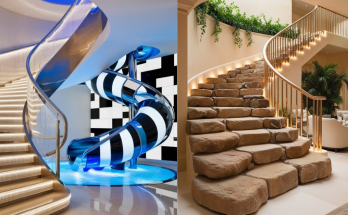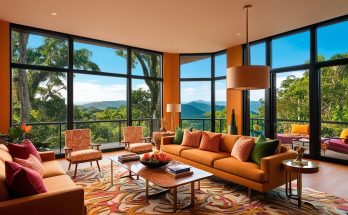The Significance of Lighting in Interior Design: Key Elements and Tips
Lighting in interior design isn’t merely functional; it profoundly influences the ambiance, mood, and functionality of a space. Whether in homes, offices, or public areas, strategic lighting can elevate a room from ordinary to extraordinary. This article explores the pivotal role of lighting in interior design, highlighting its impact on various aspects of our living environments.

1. Enhancing Ambiance and Mood
Lighting has a crucial role in setting the ambiance and evoking specific moods within a space. The intensity, color temperature, and placement of lights can create a cozy, intimate atmosphere in bedrooms or living rooms, or establish a vibrant, energetic feel in workspaces or restaurants.
- Task Lighting : Essential for activities like reading or cooking, task lighting (e.g., desk lamps or under-cabinet lights) ensures efficiency and reduces eye strain.
- Ambient Lighting : Ceiling-mounted fixtures or wall sconces provide ambient lighting, shaping the overall mood of a room. Soft, diffused ambient lighting fosters relaxation in lounges or bedrooms.
- Accent Lighting : Highlights architectural features or artwork, adding drama and depth to interiors.



2. Aesthetics and Visual Appeal
Beyond functionality, lighting serves as a design element, contributing to a room’s aesthetic appeal. Modern fixtures come in various styles and materials, seamlessly integrating into diverse design themes—minimalist, industrial, or classic.
- Statement Pieces : Lighting fixtures can act as focal points, complementing or contrasting with decor to enhance visual interest.
- Spatial Perception : Well-placed lighting can visually alter room dimensions, creating illusions of space or intimacy.

Also read : 10 Captivating types of bedroom Interior
3. Practical Considerations
Effective lighting design considers practical aspects such as energy efficiency, sustainability, and user convenience. LED technology and smart lighting systems now enable designers to achieve both aesthetic goals and environmental responsibility.
- Energy Efficiency : LEDs consume less energy and last longer than traditional bulbs, promoting sustainability.
- Control and Flexibility : Smart lighting systems allow users to adjust brightness, color, and create schedules via apps or voice commands.
- Safety and Comfort : Adequate lighting enhances safety by reducing hazards and promoting well-being through simulated natural daylight.

Conclusion
In conclusion, lighting profoundly impacts interior design by influencing space perception, functionality, and aesthetic appeal. Understanding lighting’s nuances and leveraging technological advancements enables designers to create memorable and functional interiors. By prioritizing lighting’s role in enhancing ambiance and supporting daily activities, spaces can achieve new levels of comfort, style, and efficiency.
This article emphasizes how thoughtful lighting design enhances living environments, making it indispensable in contemporary interior design practices.
Also read : Living Room Interior Designs



